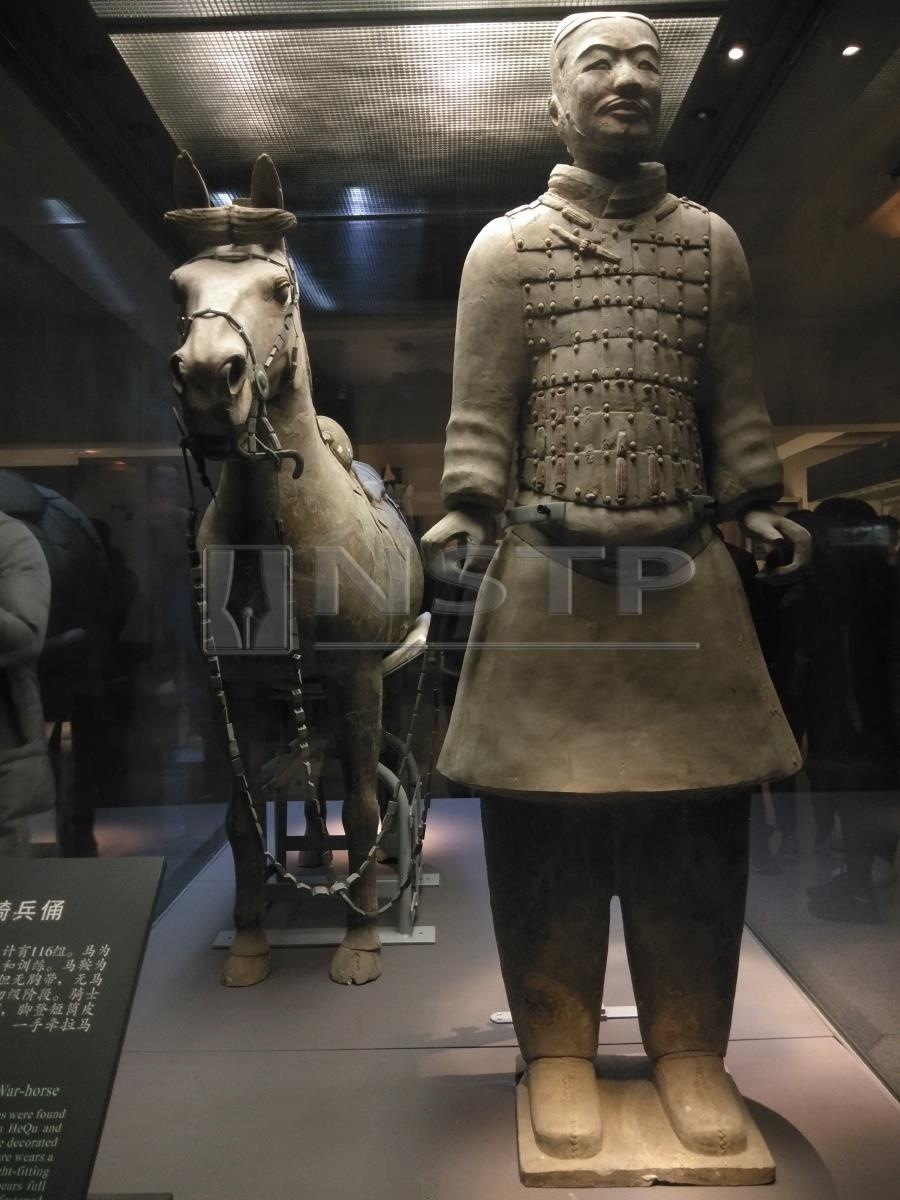Discovered in 1974, the site of the Terracotta Warriors in Shaanxi province of China has yet to reveal all its treasures, writes Loong Wai Ting
MY fascination with the Terracotta Army started years ago when I chanced upon a book about the clay warriors by British historian and travel writer, John Man. In the book, Man describes the warriors’ expression and ready-to-strike position frozen in time.
My interest continued to grow.
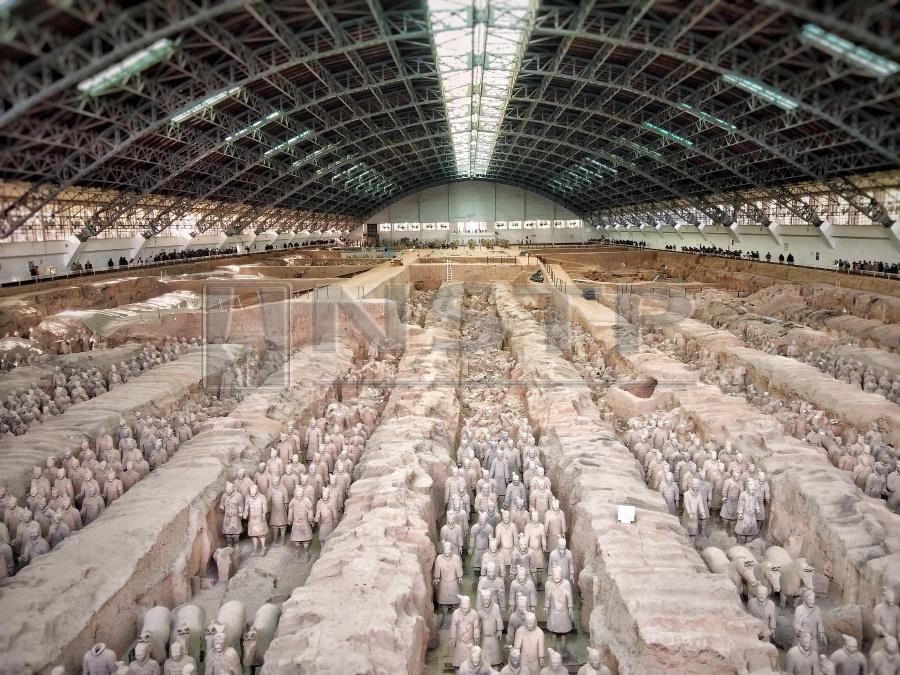
The clay army was discovered in 1974 in Lintong district, 44 km east of Xi’an city centre in China’s Shaanxi province, by a farmer surnamed Yang. The intricately crafted clay men were left underground for over 2,200 years but the details on them can clearly be seen until today.
The story goes that Yang had been digging for a well near his farm on a hot summer day. The land was parched and water was scarce. Instead of the water source, he hit something solid, which turned out to be bits and pieces of clay, some parts of a hand, body and face.
In the past, farmers toiling their land made archaeological discoveries like pieces of pottery and other ornaments.
But Yang’s discovery was destined to rewrite the history of China’s first emperor, Qin Shihuang, who unified China under one rule.
MAKING THE WAY
So, finally I pack my bags and make my way to the land of the famed Terracotta Army.
It’s still very early in the morning when I arrive atthe Terracotta Warriors Museum, after braving a bumpy ride up hill. On either side of the road, there are rows upon rows of persimmon and pomegranate trees.

The museum is located in the hilly region of the province, surrounded by tall mountains. The most famous one, Mount Li, serves as the backdrop to the museum. This is where the Terracotta Warriors were buried to protect the emperor in his afterlife.
The surrounding area has gone through tremendous change since Yang’s farming tools first hit the ground and found one of the greatest archaeological discoveries in lifetime.

The late autumn air is crisp and the sky is clear. Tourists from all corners of the globe into arrive. After getting my ticket from counter, I walk up another small path thatt takes me to the First Pit, where Yang made his find.
Passing underneath a persimmon tree with abundant fruits hanging on the low branches, my friend’s voice finds its way to me: Don’t put too much hope on the museum. It’s not what you expect it to be.
What can she possibly mean? I’ve come so far to see the warriors and I vow to make the most of my trip. Ten minutes of walking in the cold and I arrive in front of a large dome-shaped facility that reminds me of a
hangar. This is it, I tell myself. Taking a deep breath, I duck underneath an air vent that churns out warm air.
POISED FOR BATTLE
There they are. Thousands of Terracotta Army warriors, standing at attention and in perfect, symmetrical lines. Just like what I’ve read in Man’s book. Beside me, local tourists speak in rapid Mandarin and other indistinguishable dialects.
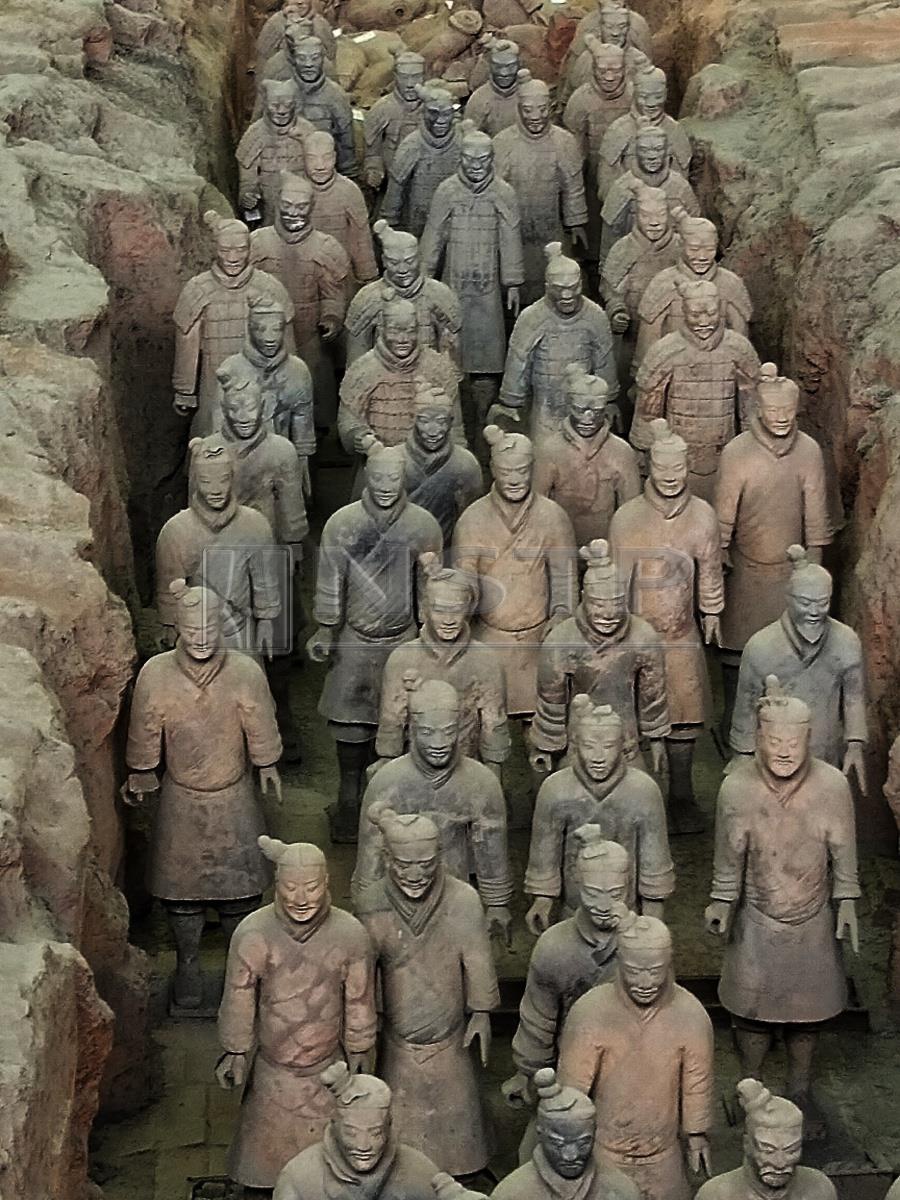
The viewing platform is heavily guarded by the Chinese police, armed with batons ready to act. I squeeze my way to the centre of the viewing platform, ignoring the many mobile phones over heads, snapping pictures of the famous army.
Covering 16,300 square metres, the highlights of the museum are the three pits, where the warriors are on full display, as well as the Exhibition of Bronze Chariots.
In the first and largest pit, there are 2,000 warriors on display. Eyes staring ahead, the soldiers are positioned according to rank and the life-size army is poised for battle.
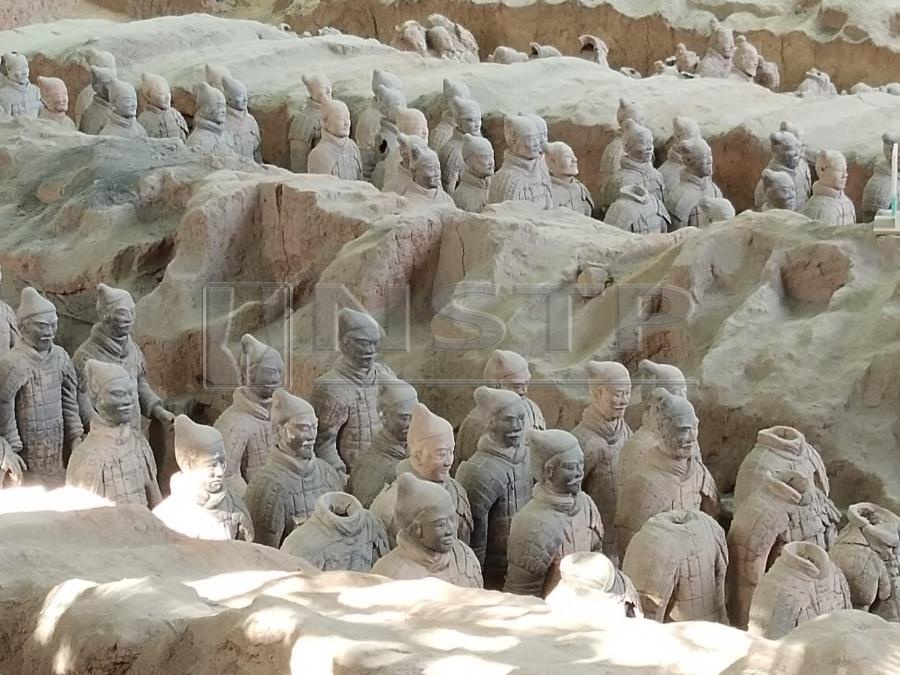
Each figure stands unsmiling, as if awaiting orders. Well, not all of these warriors have serious expressions. Some, if you look closely, seems to be suppressing a laugh, as if something funny caught them by surprise.
PRECIOUS STONES AND OTHER RARITIES
Next, I move to Pit 2 that houses the most army units with archers, chariots, cavalry and other forces. The smallest of the pit Pit 3 represents the commanding post of the general. Most of the clay figure here are missing their heads because the emperor died before work was complete.
It is said that to keep these craftsmen who worked day and night, from revealing the location of the tomb, they were buried together with the emperor.
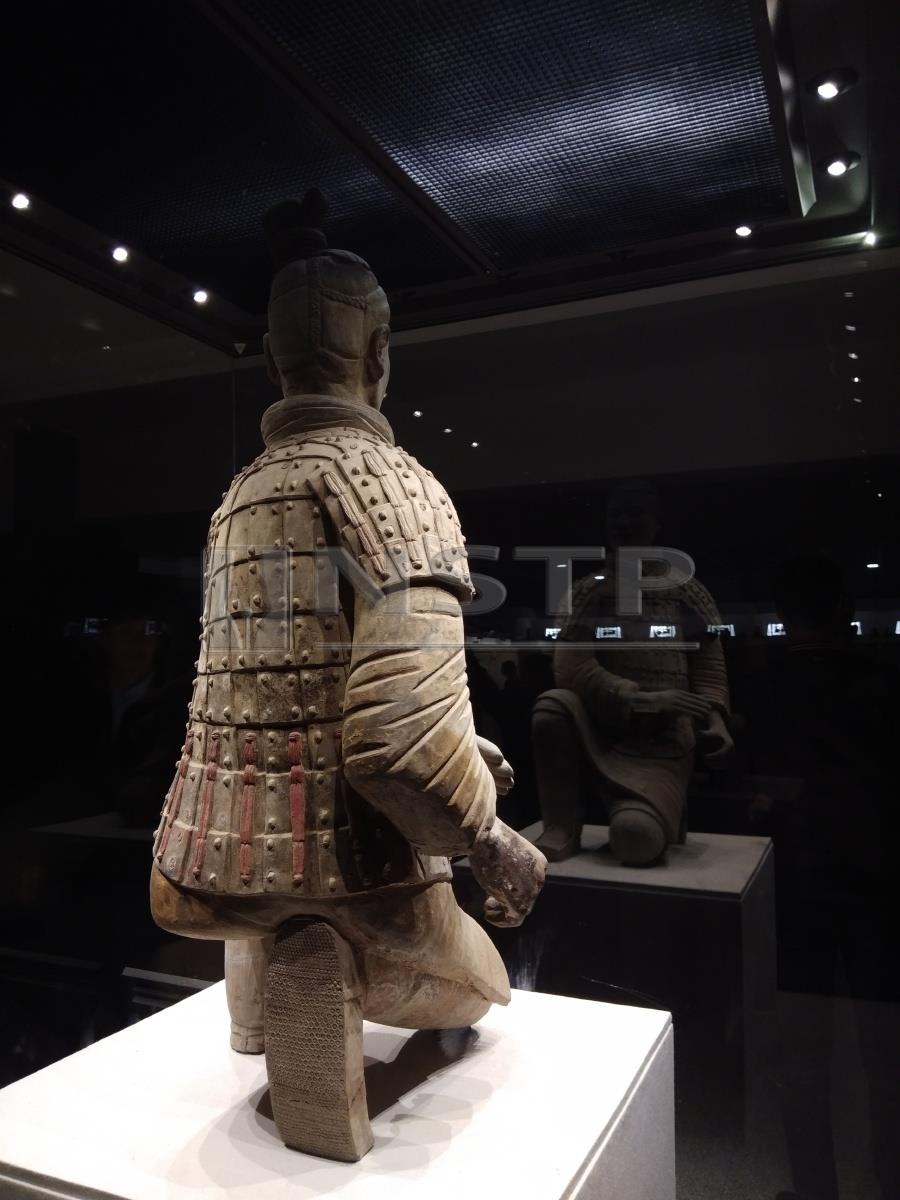
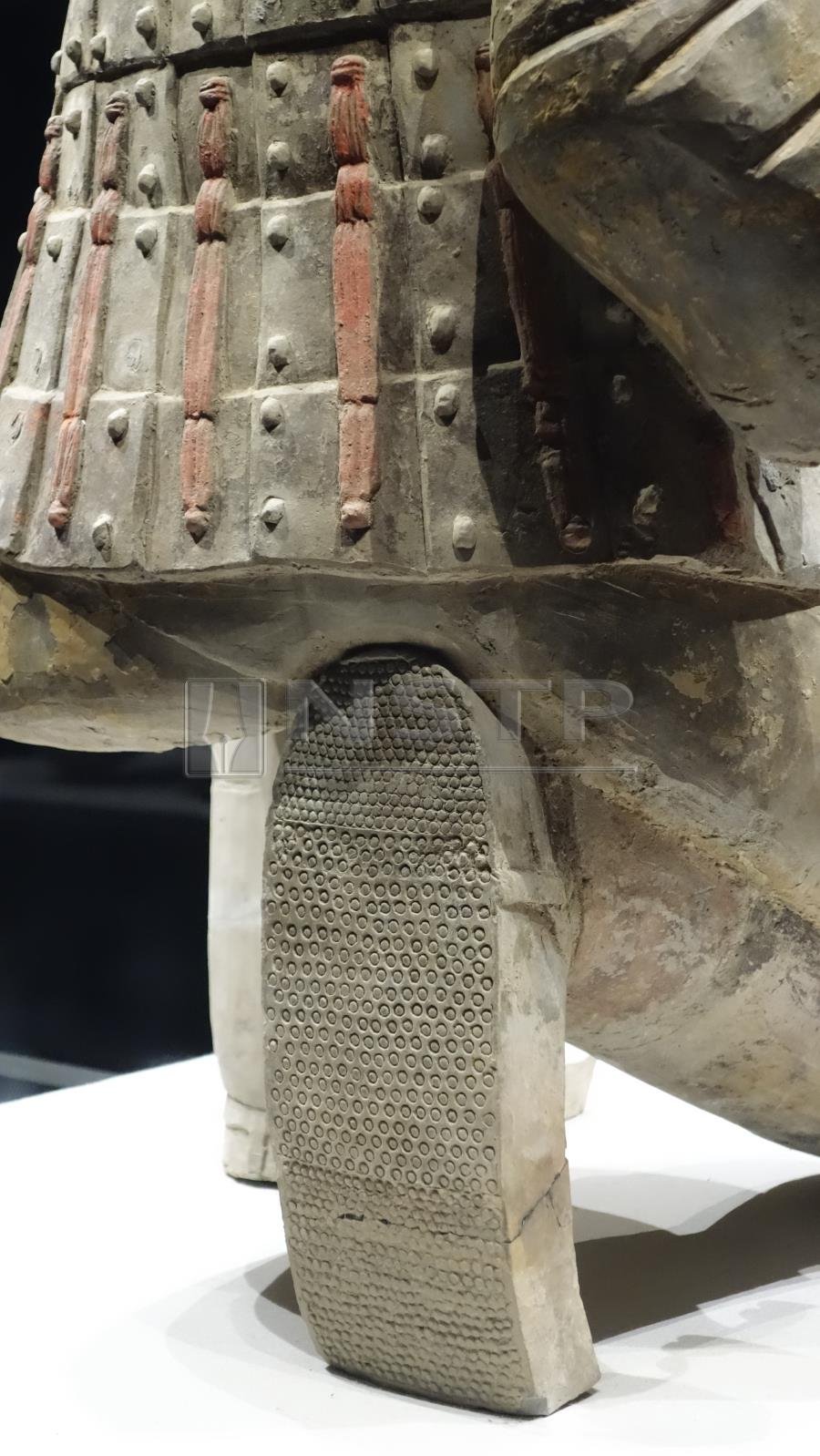
The clay figures look largely grey colour but patches of oxidised colours hint at their once vibrantly painted “uniforms.
Further excavation around the area revealed many weapons such as swords and arrow tips — all in pristine condition.
Famous Han dynasty historian Sima Qian in Records of the Grand Historian suggests that even greater treasures lie beyond the pits. He writes that the tomb ‘is filled with models of palaces, pavilions, precious stones and other rarities’.
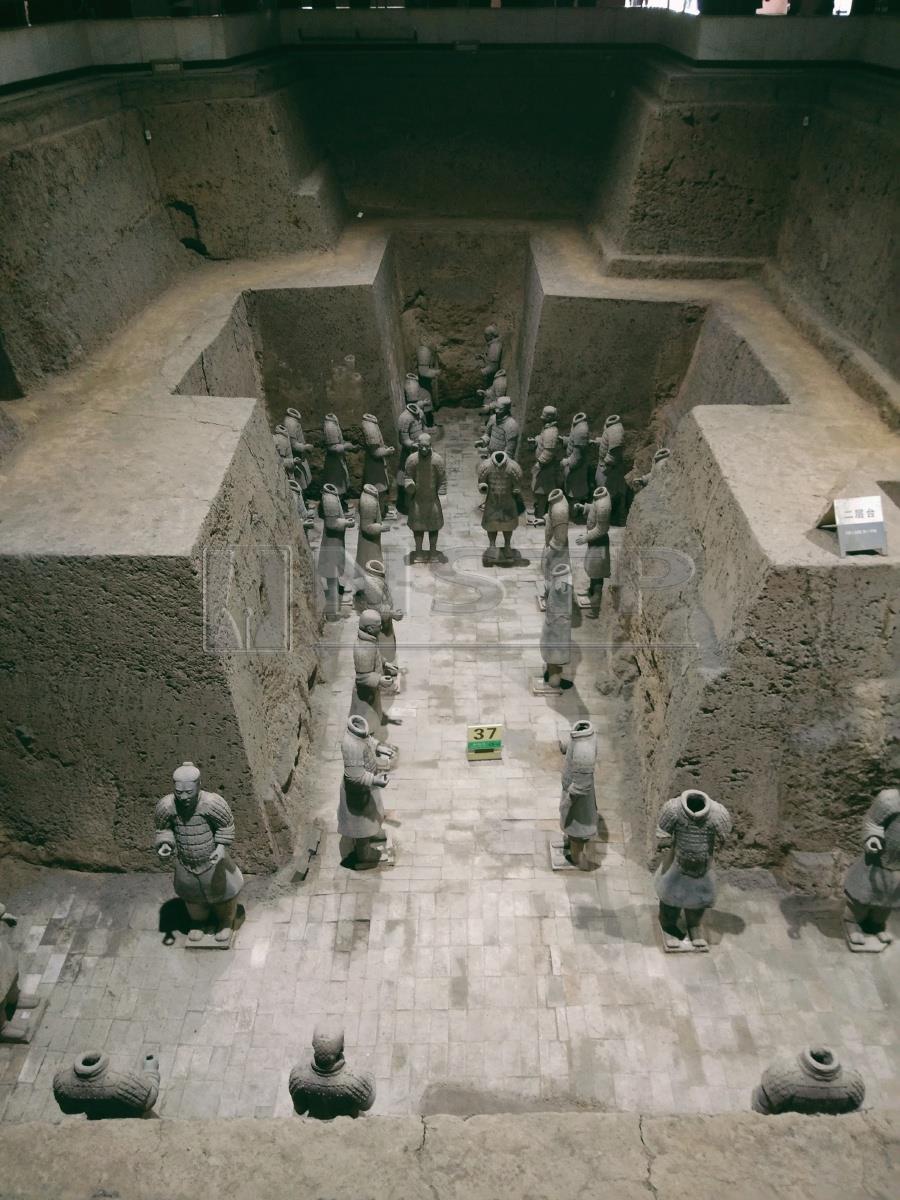
Modern tests done near the Mausoleum of Qin Shihuang revealed unusually high concentration of mercury (there’s a story that Qin Shihuang used mercury as elixir of life), which lends credence to historical accounts like Sima Qian’s.
And in other parts of the pits, archaeologists revealed that there are chambers that housed court performers like dancers, musicians and acrobats caught in mid-air performance for the emperor in afterlife. However, further excavation work has been put on hold for now.
Pictures by the writer and Chan Soo Wah
TRAVEL FILE
OPEN All YEAR ROUND
The terracotta warriors Museum is an indoor attraction. Weather condition is not likely to affect your visit there. open all year round, however, it is best to avoid going here during chinese public holidays such as National Day holiday (Oct 1 -7) and Labour Day holiday (May1-3), and on weekends.
To avoid the crowd, it is best to start your day early. Most tour buses arrive around 10am. Or you can drop by during lunch hour when most visitors are having their meal. Adults pay 150 yuan (RM90), children 120 yuan. Those below 1.2m in height can enter free of charge.
For fast and convenient travel, book your tour using the Klook app, available on both ios and android mobile platform.
Klook is running a promotion: enjoy RM50 off, with a minimum spend of RM800. Use the code JOMHOLIDAY50 at the end of checkout to enjoy the discount. If you book through the mobile app, you’re entitled to RM100 off, with a minimum spend of RM1,200. Remember to apply the promo code JOMHOLIDAY100 at the end of checkout. The promotion ends Dec 31. For details, visit jomklookholiday.com/
HOW TO GET THERE
AirAsia X flies daily from Kuala Lumpur to Xi’an, seven times a week. Travellers can also opt for the Quiet Zone, available on flights to Xi’an. Here’s why you should choose Quiet Zone: An exclusive seating area between rows seven-14, it is only available to those aged 10 years and above. There is minimal noise with no disturbances and your meals will be served faster. Located just after the Premium Flatbed cabin, the Quiet Zone comes with soft ambient lighting, making your flight experience more relaxing and enjoyable. Lowest fares only at www.airasia.


